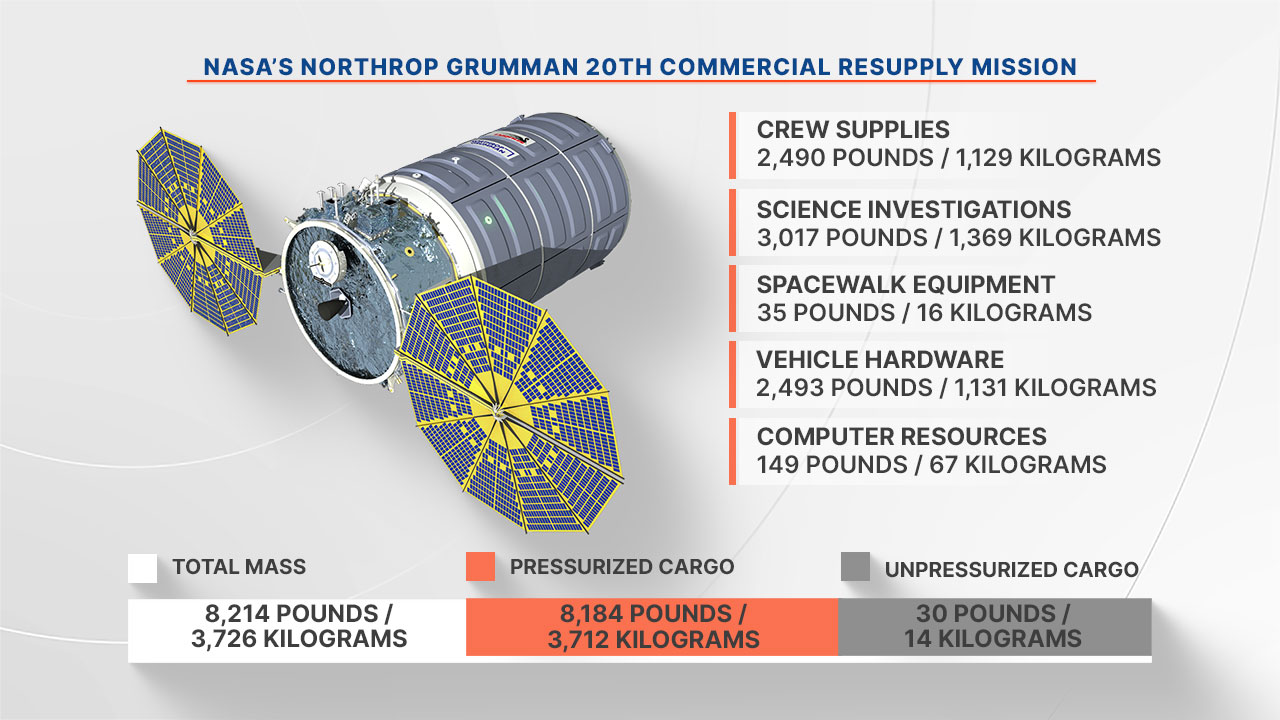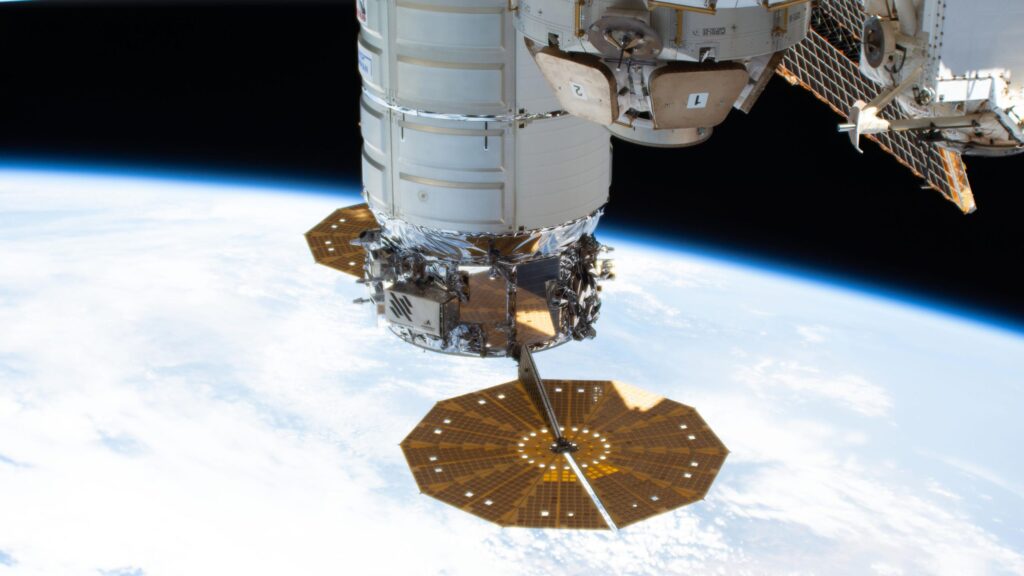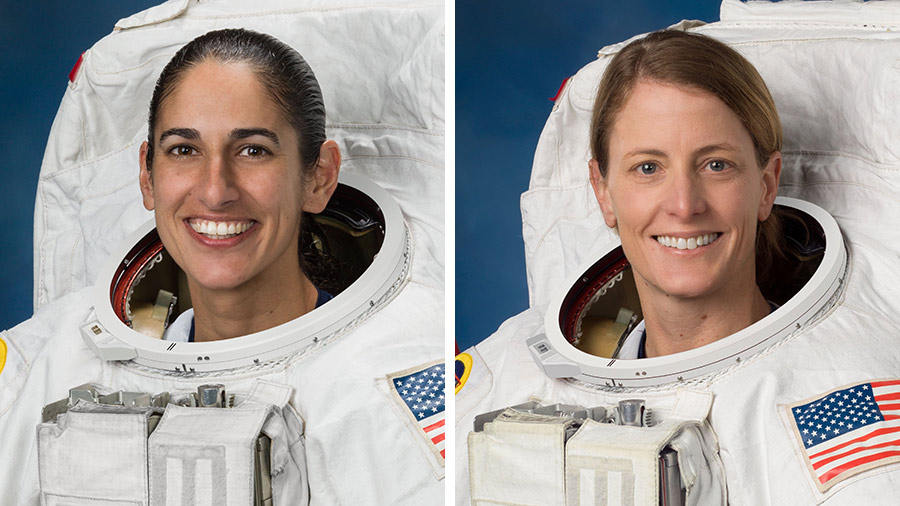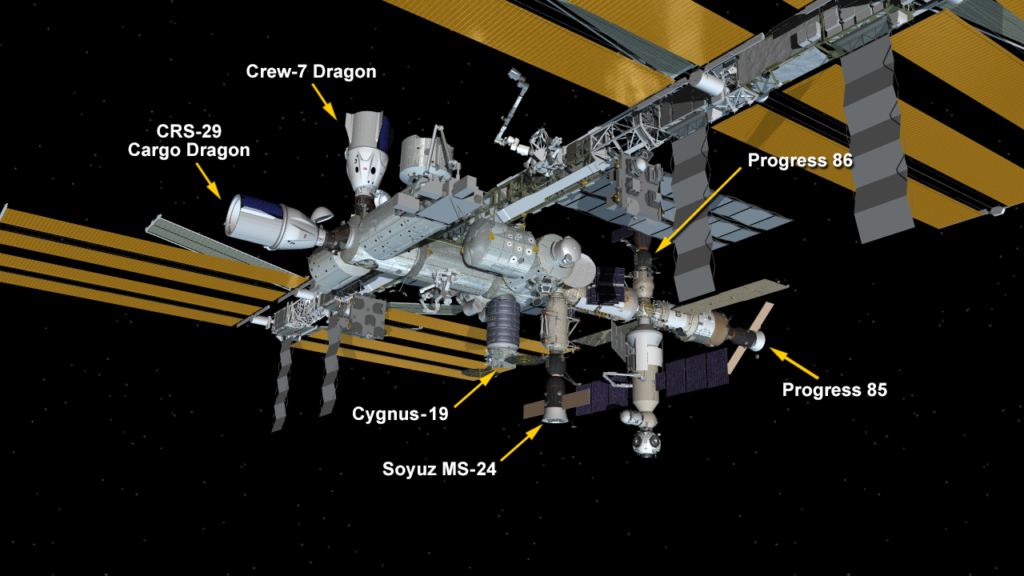
Cargo mission preparations and space research kept the Expedition 70 and Axiom Mission 3 (Ax-3) crews busy at the beginning of the week. The 11 residents working together aboard the International Space Station also continued their ongoing biomedical science and lab maintenance activities.
Northrop Grumman’s Cygnus space freighter is sitting atop a SpaceX Falcon 9 rocket counting down to a lift off no earlier than 12:07 p.m. EST on Tuesday. Cygnus is packed with more than 8,200 pounds of science and supplies scheduled for delivery to the orbital outpost on Thursday, Feb. 1. Among the new science experiments being delivered are the Metal 3D Printer that tests the 3D printing of small metal parts in space and the Robotic Surgery Tech Demo that tests remotely controlled surgical techniques.
NASA astronauts Jasmin Moghbeli and Loral O’Hara trained on a computer Monday afternoon for Cygnus’ arrival. Moghbeli will be at the robotics workstation on Thursday commanding the Canadarm 2 robotic arm to capture Cygnus at 4:20 a.m. O’Hara will also be on duty monitoring Cygnus’ automated approach and rendezvous early Thursday.
The duo along with JAXA (Japan Aerospace Exploration Agency) astronaut Satoshi Furukawa started the day with blood, saliva, and urine sample collections. The samples were processed first then stowed in a science freezer for later analysis to understand how living in weightlessness affects the human body. Furukawa later assisted Ax-3 crewmates Michael López-Alegría and Alper Gezeravcı as they studied how to use the CRISPR method to genetically modify plants promoting space agriculture and sustainable life support systems.
Station Commander Andreas Mogensen from ESA (European Space Agency) started his day with a cognition test measuring his spatial orientation, visual tracking, and decision-making abilities in microgravity. Afterward, he supported the Ax-3 crew throughout the day, prepared the station for Cygnus cargo transfers, and recorded video messages for European students.
Ax-3 Pilot Walter Villadei documented his meals on Monday and answered a few questions about his dining experience. Villadei then videotaped a simple space physics experiment using a yo-yo then recorded a video message for future Italian pilots. Mission Specialist Marcus Wandt from ESA also recorded a video message using 360-degree virtual reality gear to promote science for Swedish audiences. He later documented his sleep experiences, took a cognition test, then uninstalled a high speed camera that photographed Earth’s thunderstorms.
Over in the orbiting lab’s Roscosmos segment, veteran cosmonaut Oleg Kononenko repressurized thermal control system components then swapped batteries inside hardware designed to inspect difficult to reach areas on the station. Flight Engineer Nikolai Chub spent his day inventorying tools and equipment inside the Poisk module and photographing windows on the Zvezda service module. Cosmonaut Konstantin Borisov started his day disconnecting a student-controlled Earth observation camera then serviced ventilation systems in Zvezda and the Nauka science module.
The space station is orbiting a few miles higher after the Roscosmos Progress 85 cargo craft fired its engines for over 13 minutes on Saturday. The orbital reboost lifted the station to the correct altitude for an upcoming Progress cargo launch in February and the next Soyuz crew swap planned for early spring.
Learn more about station activities by following the space station blog, @space_station and @ISS_Research on X, as well as the ISS Facebook and ISS Instagram accounts.
Get weekly video highlights at: https://roundupreads.jsc.nasa.gov/videoupdate/
Get the latest from NASA delivered every week. Subscribe here: www.nasa.gov/subscribe




